
Tel: 020 7620 1818 email: cookandbutler@btconnect.com
The Worshipful Company of Blacksmiths
www.blacksmithscompany.org.uk
Commemoration Dinner
March 2017, Cutlers' Hall, London
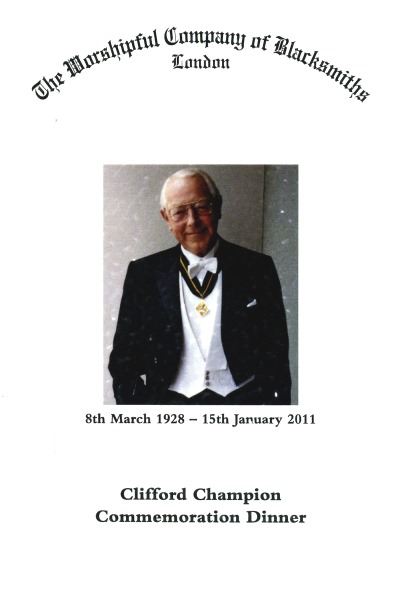

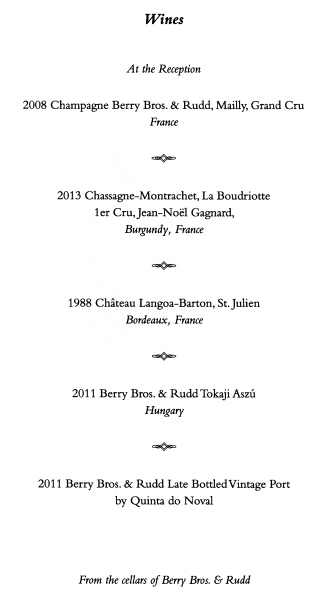
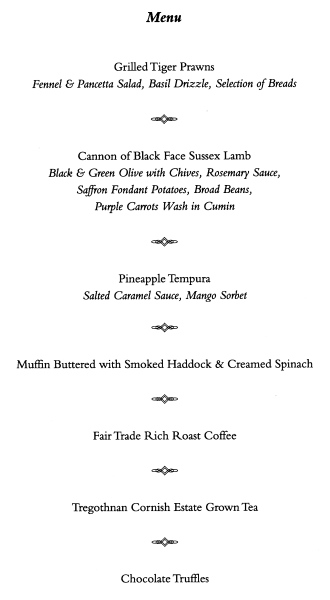

Election Court Dinner, July 2011
Watermen & Lightermen's Hall, London
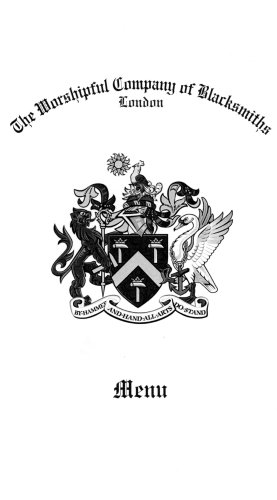
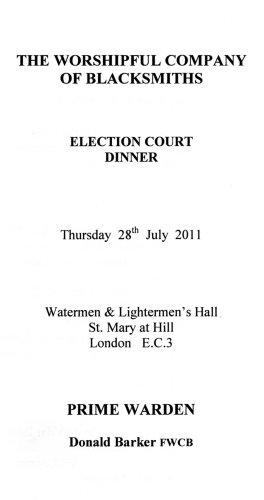
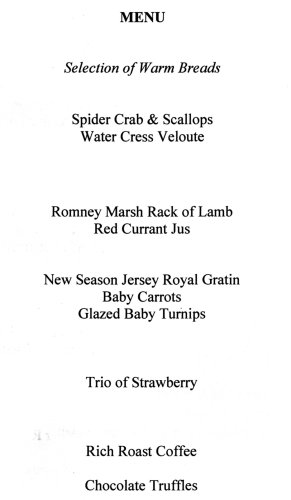

A Brief History of the Company
The origins of the Worshipful Company of Blacksmiths are
lost in time. It is known that from the 1300’s to the Reformation the
Company was known as a Fraternity, having strong religious connotations. The
Patron Saint of the Fraternity was St. Loie who is a French Saint from the
Limoges region and today is the Patron Saint of the Blacksmiths. (He is
sometimes referred to as St. Eloye or St. Loije but in Latin he is referred
to as St. Eligius).
Our main Charters were granted in 1571, 1604 and 1638 enabling us to become
the fully- fledged Livery Company we are today, but the earliest written
records we have in our possession are dated 1496.
The term Livery is a relic of feudalism; originally indicating not only
clothing but the allowance of food and wine which the barons, prelates and
monastic houses granted to their servants. It was from the monastic orders
that the Guilds, in 1346, adopted a particular mode of dress, which at one
time consisted of a coat, a surcoat and a gown. The latter with its hood
being reserved for ceremonial occasions. Today, when an applicant takes his
Oath as a Liveryman, he should be clothed with the livery which is the gown.
If a hood is used it should be placed over the right shoulder. Up to the
late 18th century the Livery exercised virtually complete control over the
craft, their role in life being:
1. Protection of the customer from shoddy workmanship;
2. Protection of apprentices from the harshness of their Master, and
3. Ensuring the Master did not over-charge for his wares.
In those days a person could trade within the walls of the City only if he
possessed the Freedom of the City of London and by the same token he could
take unto himself an apprentice. It followed that an apprentice, as soon as
he had served his indenture, during which he learned the “mistery” of his
Craft, he would obtain his Freedom of the Company or Guild and be free to
serve any Master or to set up on his own.
In the case of our Company or Livery, it enabled the free blacksmith to
trade and practise his Craft inside the City boundaries and within a four
mile radius of the City Walls (by a later Charter increased to seven miles,
probably as a means of removing the noise of the hammers and the
accompanying smells from the over-crowded housing areas).
Today, no one can become a Liveryman of a Livery Company without first
obtaining the Freedom of the City, but such entry to a Company does not
necessarily require a proficiency in the Craft. Regrettably almost all the
privileges attached to the honour of the Freedom of the City have been
eroded through time.
In 1785 we sold our Livery Hall in the City of London as our control over
the Craft largely disappeared. Of necessity blacksmiths moved away from the
City and it was impossible to control their wares. Apprentices began to come
under the wing of several of the unions which sprang up for the purpose of
their protection. However, apprentices are still welcomed today under the
aegis of the Company and the City of London and our support of the craft has
been greatly strengthened through our Awards system and the criteria
necessary for the progressive stages of the awards.
![]()